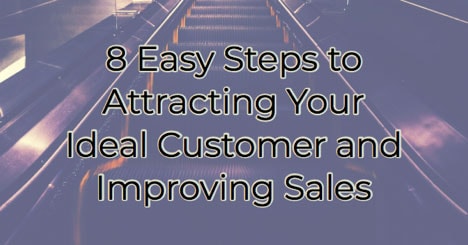February 2019 – One of the most common mistakes businesses make is wanting to be all things to all customers. Just as in life and friendships, you will never be everyone’s “cup of tea.”
That’s okay. It’s more than okay.
Understanding this and attracting your ideal customer is the one way to build loyalty among your clients and provide them with the services and products they need. In personalizing your sales approach you will gain more, not less. Here’s how you can go about doing that:

1. Decide who your ideal customer is. There is a group (or maybe several groups) that you can help better than any other business. Who are they? Identify them, flesh out details about their demographics including:
• How old are they?
• How much money do they make? Do they have disposable income or are they living check to check?
• What do they do for a living?
• How do they spend their free time?
• What services or products are they loyal to?
2. Figure out what they need. What is their most pressing issue? How does your business help them solve this?
3. Analyze what they want? Now that you know what they’re struggling with figure out what they want; what they wish they had even if it’s not in the budget right now. Focus on how you can help them get there. Several banks have used this approach selling the question of what dream can they help you achieve today.
4. Design marketing campaigns based around the second and third step in this list. Target individual demographics separately. Don’t try to use an all-encompassing solution for the different groups who buy from you. For instance, market to Millennials differently than you do retirees. They have different concerns. Designing your marketing strategy around these groups involves more than just your message. It also affects where and how you’re delivering it. For Millennials, you might turn to Instagram or YouTube. For the older generation, it might be Facebook and direct mail. You need to assess where your clients are so you can implement a strategy to reach them.
5. Create content that appeals to each group. Yes, your marketing message is content but this step takes it a bit further. Create ebooks or infographics with information that will help your ideal customer. Do video or host events. Understand the group you want to reach and then create content and experiences to reach them best. Ever notice a lot of end-of-life providers host free lunch and learns? That’s because they’re a popular way to reach that demographic.
6. Create a clear and “doable” call to action (CTA). At the end (and even midway, as appropriate) of all of your helpful content, you’ll want a clear and actionable CTA. The call to action must be the next step in what they’re looking for. For instance, if you’re selling something with a long sales cycle, you don’t want to add a buy-now button to your About Page on your website. About Pages are something most people visit when they want to learn more about you, not at a late stage in the sales cycle. On the other hand, a call to action to learn more about you on an infographic that walks people through the financing process of your product or service is not a good fit either because by that point most people are ready to consider signing with you. They likely already know about you.
7. Find a way to delight them. Remember when you were figuring out what your ideal customer wanted and needed? Now you want to use that information to make an impression. By this point, you’ve already attracted them with your targeted marketing. They’re already looking into what you have to offer. They’ve scanned your valuable, personalized materials and content. Now, use what you know about them to make an impression. This could be through a targeted email marketing drip campaign or promotional materials that are tied to their wants and needs. But at this stage, you want to kick up your marketing and do something no one else is doing. Maybe that’s a handwritten note or a pop-up event. Use what you know about your ideal customer to surprise and delight them.
8. Always follow-up. Most salespeople know to follow up but incessant calls from your sales team can get old. You need a way to stay in touch with your ideal customer as they consider doing business with you. You also want to stay in contact with those who have purchased and may purchase again. You can do this through a newsletter or other means of occasional contact. Get their email address. Being connected on social media is not enough. They could opt out of those platforms at any time but for someone to give up email that would be nearly impossible. Getting someone’s email is like getting their home address. It could change but not as often.
Get to work at attracting your ideal customer. They’ll remain more loyal to you and you’ll be more able to solve their problems and suit their needs. You’ll have fewer customer service issues because they are a good fit for your business. Stop trying to appeal to everyone and speak to those you are best suited to help.
Christina R. Green teaches small businesses, chambers, and associations how to connect through content. Her articles have appeared in the Midwest Society of Association Executives’ Magazine, NTEN.org, AssociationTech, and Writer’s Weekly. She blogs regularly at Frankjkenny.com and the Event Manager Blog. She’s a bookish writer on a quest to bring great storytelling to organizations everywhere.

